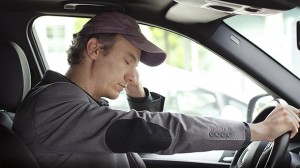The overall aim with this study was to gather knowledge about countermeasures for driver fatigue in road, rail, sea and air transportation. The knowledge has been used as an input for evaluating advantages and disadvantages with different countermeasures and to estimate their potential to be used regardless modes of transportation.
A considerable part of the crashes in transportation involving professional drivers are due to fatigue/sleepiness and one of the causes is that work and rest are displaced to suboptimal times due to the need for around-the-clock operations.
The bulk of the report summarizes ways of counteracting fatigue or its consequences regardless transportation mode, for example:
- Scheduling. The most important countermeasure is reasonable work scheduling that avoids night work, short daily rest, long time awake, compressed work schedules, long work shifts, and several other details of work schedules. All factors have evidence based support.
- Legislation. Time of day, which is the most important aspect, is not acknowledged in any
legislation, except for a modification of duration during night flying. Here is an important area of improvement. - A just culture. This refers to a just and forgiving response to vehicle operators’ self-report of incidents and fatigue. Absence of a just culture will conceal risk.
- Technical solutions. These include alertness monitoring devices that signal when a dangerous level of sleepiness has been reached. Another approach is ”dead man’s hand” in rail traffic (failure to respond to a attention signal causes warning sounds and eventual breaking of the train). Similar approaches have been tried at sea.
- Infrastructure. Various types of road surface alterations outside the road/lane that produce noise/vibrations. Similarly, the Automatic Train Control system (ATC), which stops the train if the driver does not respond to the signal system.
- Education. Knowledge of the signs, effects and causes of fatigue is needed in all modes of transport work. Systematic programs across transport modes should be encouraged.
- Self-administered alertness interventions. This includes stopping the vehicle, napping, intake of caffeine, or use of bright light.
The method used was a literature review and a workshop with experts from all transportations modes. At the workshop the effectiveness of countermeasures for a single mode, but also regardless mode were discussed and a ranking was done.
Report:
VTI report R852A: Countermeasures for fatigue in transportation – A review of existing methods for drivers on road, rail, sea and in aviation.
Authors: Anna Anund, Carina Fors, Göran Kecklund, Wessel van Leeuwen, Torbjörn Åkerstedt.
Link to report (in English)
 Contact: Contact:Anna Anund anna.anund@vti.se VTI, Sweden |







Follow us: